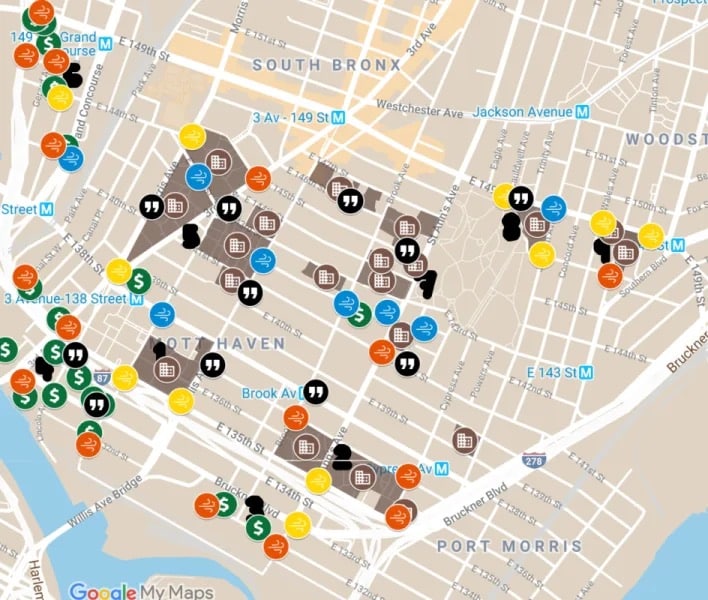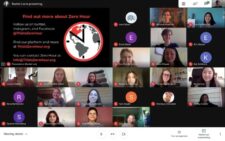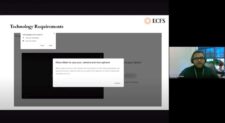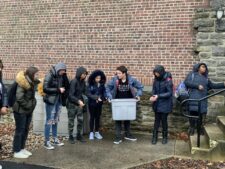In their first day in City Semester photography, students begin by entering “1970s South Bronx” into a Google Image search. Perhaps unsurprisingly, the images that emerge are those of burnt buildings, rubble-strewn lots, and abandoned cars. Following this exercise, photography teacher Mark Stracke — himself an ECFS presence since the 1970s — shows students a video featuring David Gonzalez, a photojournalist for The New York Times who grew up in the South Bronx in that era and taught photography to schoolchildren there. It turns out that, when handed a camera, Gonzalez’ students photographed not despair, but family and friends. “Click. In the middle of a Mott Haven street, a lone couple hugs tightly and twirls to the music of an unseen orchestra. Click. A blind guitarist sings boleros from a faraway island.” Where some saw only rubble, Gonzalez argues that “life persisted in all of its ordinary glory.”
City Semester is unique among semester programs in that students are asked to examine their own city and, by doing so, examine themselves — as students in a private school, as neighbors in the Bronx, and as citizens of our great metropolis. When Stracke hands City Semester students a camera, he asks them a simple, essential question: “Where are you coming from?” Just as a good photographer must be continually aware of their physical viewpoint, our students are asked to reexamine their intellectual and ethical ones. By doing so, they begin to unravel the preexisting narratives they have about themselves and their world. They shift between lenses while standing in place.
Progressive schools like ECFS are often thought of as aiming at “transformational” learning experiences. But what exactly is the transformation taking place? The writer and philosopher Iris Murdoch speaks of ethics as the ability to see beyond the self. For Murdoch, how we act in the world mirrors what we see. “I can only choose within the world I can see,” she writes, “which implies that clear vision is a result of moral imagination and moral effort.” It is this transformation — of clear vision into civic engagement — that we see every year in our City Semester students. It is this clarity that distinguishes our students, who, in Felix Adler’s famous words, are “competent to change their environment to greater conformity with moral ideals.”
This week, City Semester students are engaged in an introductory project on the nature of maps, culminating in the creation of multi-layered digital maps of the South Bronx. The class shares a laugh at their initial attempts to freehand a map of the city from memory: Manhattan sits large and in the center, naturally, with Brooklyn, Queens, and the Bronx as inexplicably adjacent floating islands. Staten Island is a blob adrift somewhere in the Atlantic. While we all work, live, or play in the city, students quickly realize we don’t know nearly as much as we like to think. Map creation becomes a tool for inquiry and achieving perspective — a new way of seeing.

As with all of our interdisciplinary projects, individual subjects are seen not as separate entities, but as different lenses with which to view a problem. Sometimes this will mean using a quantitative lens to analyze data and test a hypothesis, and sometimes this will mean using a historical or literary lens to understand how a narrative has been formed and framed.
How does one story emerge, we ask, when we look at demographic data, and another when we interview people on the street in their native language? How do we uncover the layers of our city’s story? Seeing through multiple lenses, we’re able to understand a café selling $13 avocado toast across the street from NYCHA housing in Chelsea not just as an individual decision made by a business owner, but as part of a broader structural and institutional history, a result, in part, of specific policies formed for complex reasons. Understanding the contingent nature of our city’s history empowers our students because it allows them to imagine alternative possibilities.

Over the next few months, students will uncover the myriad ways our bustling city supports the way humans live day to day: where our food comes from, where our waste goes, how we power our homes and phones. Whether we’re canoeing down the Bronx River or visiting the Hunts Point Cooperative Market at 4:00am, students come to appreciate the city as a tremendously complex ecosystem — simultaneously durable and fragile. They understand, as science teacher Howie Waldman reminds them daily, that “everywhere is the environment.” That the skyscrapers of Midtown are inextricable from the 450 million-year-old Manhattan schist on which they sit, just twenty feet below Times Square.
For each City Semester student, our hope is that a new understanding of where I come from sharpens their sense of where we can go.
Murdoch, I. (1970). The sovereignty of good. London: Routledge & K. Paul.



